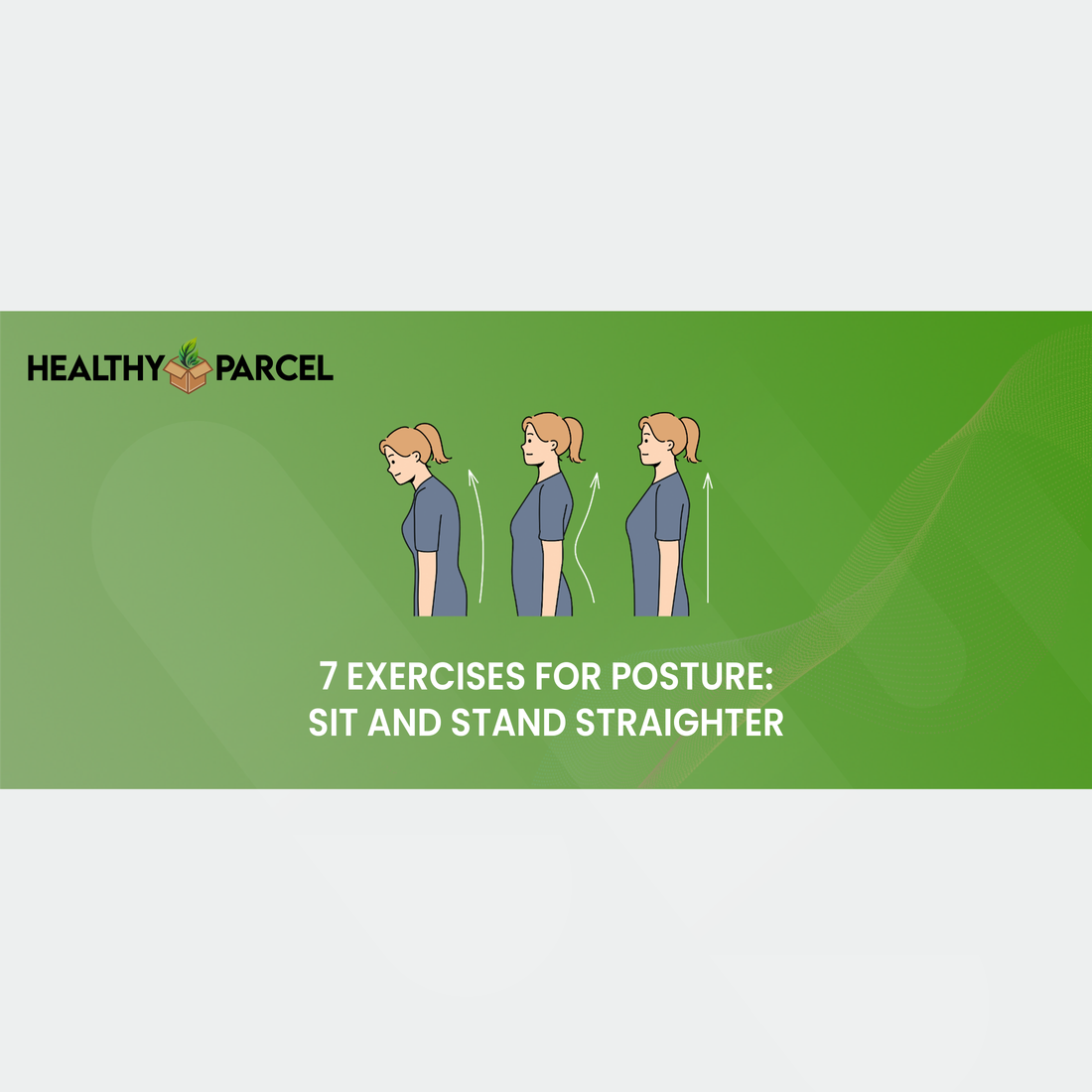Improving your posture can be achieved over time through a mix of yoga, stretching, and exercises that focus on lengthening the spine.
Good posture isn't just about appearance; it also helps build strength, flexibility, and balance in your body. These benefits can lead to reduced muscle pain and increased energy throughout the day.
Maintaining proper posture minimizes stress on your muscles and ligaments, lowering your risk of injury.
There are also potential mental health benefits. A study suggests that maintaining an upright posture can boost positive feelings, reduce negative self-focus, and lessen fatigue in individuals with mild-to-moderate depression.
Another study found that adopting an open posture can enhance body-related emotions, such as body image satisfaction and self-appraisal.
Ready to start? Continue reading to discover 12 exercises that can help you stand a little taller.
Exercises to Improve Posture
1. Child’s Pose

Child's pose is great for stretching and lengthening your spine, glutes, and hamstrings, and it can also help release tension in your lower back and neck.
Here’s how to do it:
- Start by sitting on your shins with your knees together, big toes touching, and heels spread out to the sides.
- Bend forward at the hips, extending your hands out in front of you.
- Lower your hips back towards your feet. If your thighs don’t touch the ground, use a pillow or folded blanket for support.
- Rest your forehead on the floor or turn your head to one side.
- Either extend your arms forward or rest them alongside your body.
- Breathe deeply into the back of your rib cage and waist.
- Hold this pose for up to 5 minutes, continuing to breathe deeply and relax.
2. Forward Fold

This standing stretch helps release tension in your spine, glutes, and hamstrings while also stretching your hips and legs.
Here’s how to do it:
- Stand with your big toes touching and heels slightly apart.
- Place your hands on your hips and bend forward at the hips.
- Lower your hands toward the floor or rest them on a block. It's okay if your hands don't reach the ground—just go as far as you can.
- Slightly bend your knees, soften your hips, and let your spine lengthen.
- Tuck your chin into your chest and let your head hang down.
- Stay in this pose for up to 1 minute, focusing on your breath.
3. Cat-Cow

Cat-Cow pose is great for relieving tension in your torso, shoulders, and neck while boosting blood circulation and spinal flexibility.
Here’s how to do it:
- Start on your hands and knees, ensuring your weight is balanced evenly.
- Inhale as you look up, allowing your abdomen to drop toward the floor and extending your spine.
- Exhale as you arch your spine toward the ceiling, tucking your chin into your chest.
- Repeat this movement for at least 1 minute, coordinating your breath with the motion.
4. Standing Cat-Cow

This standing variation of Cat-Cow helps ease tightness in your back, hips, and glutes.
Here’s how to do it:
- Stand with your feet hip-width apart and keep a slight bend in your knees.
- Extend your hands in front of you or rest them on your thighs.
- Lengthen your neck, bring your chin to your chest, and round your spine.
- Then, look up, lift your chest, and arch your spine in the opposite direction.
- Hold each position for 5 breaths.
- Repeat this movement for a few minutes.
5. High Plank

High planks are excellent for easing pain and stiffness throughout your body while strengthening your shoulders, glutes, and hamstrings. They also improve balance and core strength, which are crucial for good posture.
Here’s how to do it:
- Start on all fours, then straighten your legs, lift your heels, and raise your hips.
- Keep your back straight and engage your abdominal, arm, and leg muscles.
- Lengthen the back of your neck, soften your throat, and gaze down at the floor.
- Ensure your chest is open and your shoulders are back.
- Hold this position for up to 1 minute.
6. Side Plank

This plank variation targets the muscles in your sides and glutes. Strengthening and aligning these muscles helps support your back and improve posture.
Here’s how to do it:
- Start in a high plank position and bring your right hand slightly inward.
- Shift your weight onto your right hand, stack your ankles, and lift your hips.
- Place your left hand on your hip or extend it toward the ceiling.
- For extra support, you can drop your right knee to the floor.
- Engage your abdominals, sides, and glutes while holding this pose.
- Keep your body in a straight line from your head to your heels.
- Look straight ahead or up at your hand.
- Hold for up to 30 seconds.
- Repeat on the other side.
7. Glute Bridge

Glute bridges are great for strengthening and activating your glutes, which can help alleviate lower back pain. This exercise improves the function and alignment of your hips and pelvis, leading to better posture.
Here’s how to do it:
- Lie on your back with your knees bent and feet about hip-width apart.
- Position your feet roughly a foot away from your hips.
- Place your arms at your sides with palms facing down.
- Exhale and lift your hips toward the sky, keeping your spine straight.
- Hold this position for up to 1 minute.
Takeaway:
To build and maintain good posture, you need a combination of muscle strength, joint mobility, and overall balance. Staying active, being mindful of your body, and wearing supportive shoes can all contribute to better posture.
If you spend a lot of time sitting, consider making your workspace more ergonomic. Adding regular movement, like walking around the room every hour, can also be helpful.

